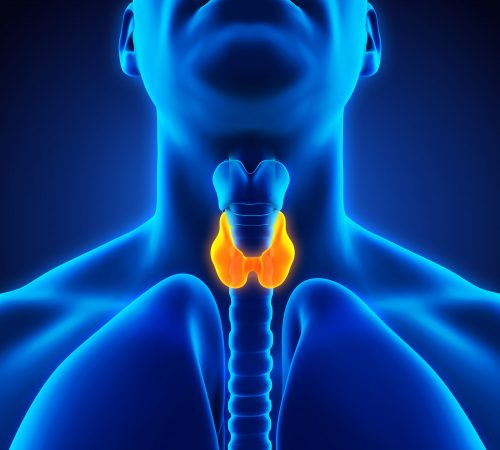The Sledgehammer Approach to TRT

Introduction
This might be a difficult concept to grasp, but the purpose of TRT is to help your body achieve homeostasis. The role of testosterone in this process is primarily to help facilitate growth and repair during anabolic periods. It is not about goals such as attaining big muscles, it is not about being a stallion in the bedroom, it is not about making you an alpha-male or Casanova. It is simply about helping your body achieve balance so that your body can function as it should. Sounds a bit dull with false promises of TRT making you “the man” from charlatans wanting to profit from your desperation, but it is simply about making you YOU.
“Alright,” said Deep Thought. “The Answer to the Great Question…”
“Yes…!”
“Of Life, the Universe and Everything…” said Deep Thought.
“Yes…!”
“Is…” said Deep Thought, and paused.
“Yes…!”
“Is…”
“Yes…!!!…?”
“Forty-two,” said Deep Thought, with infinite majesty and calm.
From a purely biological perspective, your one job is to pass on your DNA to future generations, it’s as simple as that. What do you need in order to achieve that? Optimised testosterone levels helps translate your body into attaining psychological and physical health, which in turn translates into being ‘strong’ which subsequently increases your chances of selection to procreate. Once you’ve procreated, is your job over? No, of course not, you need to stay healthy long enough for that person to grow up and do the same. I’m not one for quoting The Lion King but it’s “The circle of life”. Is your job over then? Hell yes. Should you accept the inevitable decline that will come with low testosterone? Hell no. What an incredible playground it is, watch your DNA thrive, take part, live every second.
Optimised hormone levels along with a healthy lifestyle, nutrition and exercise, can help you to achieve your genetic potential. It’s short-sighted to think that the aim of testosterone replacement therapy is to achieve strong erections and big muscles, it’s about health. If your weak erections and lack of musculature are due to low testosterone, TRT will help. You need stable levels titrated to your genetics, physiology and requirements to give you strong foundations to build on. Your biology wants you to pass on your DNA, it wants you to find a mate, it needs you to have a strong erection, it needs you to be the best version of you that your DNA will allow. Work with your body, not against it.
Androgenic Anabolic Steroids
Shock, horror, testosterone IS an anabolic steroid. However, its use in TRT is to restore and optimise your androgen levels, not to raise them to supra-physiological levels. It’s the same chemical structure as your own body’s natural testosterone, simply with some carbon atoms attached to it and a carrier oil. I’ve discussed in detail how more is not better, I’ve discussed it so much that I would like to think it’s now assumed knowledge! If it’s not, please read TRT – Chasing Numbers. There’s a big difference between use and abuse, there’s also a big difference between proper use and improper use.
The Cookie-Cutter Approach to TRT
The National Health Service should adhere to the British Society for Sexual Medicine Guidelines on Adult Testosterone Deficiency, With Statements for UK Practice (2023 edition). The Men’s Health Clinic has produced TRT Wars – How to Get TRT in the UK as well as a more recent update to help patients not only get the help that they need, but also to give them the knowledge and resources to seek gold standard care and treatment.
Here in the UK, NHS doctors must adhere to guidelines and use the recommended medications at the appropriate dosages. These medicines have been deemed to be suitable, effective and safe. If they digress from the standard, they must be able to justify their practice, it always comes down to safety and cost-effectiveness. NICE stands for the National Institute for Clinical Excellence, it should read National Institute for COST-EFFECTIVENESS.
The UK licenced treatment for treating Testosterone Deficiency Syndrome is Nebido (Testosterone Undeconate). According to the British National Formulary it should be prescribed:-
1 g every 10–14 weeks, to be given over 2 minutes, if necessary, second dose may be given after 6 weeks to achieve rapid steady state plasma testosterone levels and then every 10–14 weeks.
When The Men’s Health Clinic first opened in 2016, we used Nebido as our first line TRT option because we were led to believe that it would provide stable levels. The infrequent injection frequency seemed very patient-friendly, which we thought would improve concordance and compliance with therapy.
Another ester commonly prescribed for TRT is Sustanon, it is a blend of four esters – testosterone decanoate, isocaproate, phenylpropionate and propionate. According to the BNF it should be prescribed:-
1 mL every 3 weeks.
I don’t prescribe this ‘blend’ of esters, as it seems that science fiction does not prevail when it comes to the blends not working in conjunction with each other, shock horror!
If you are lucky enough to be prescribed Testosterone Enanthate, the gold standard when it comes to TRT, it’s supposed to be used:-
Initially 250 mg every 2–3 weeks; maintenance 250 mg every 3–6 weeks.
I have discussed the pharmacokinetics of these esters in Gold Standard TRT. The data is there to support more frequent injections but the trouble is, no one is listening, at least not yet. The Men’s Health Clinic are trying to affect a change, we work alongside a number of GP’s in helping guys restore their testosterone levels to within the normal physiological reference ranges, yet we still do come across brick walls.
I’m in the middle of writing a blog called ‘The Future of TRT – Micro-dosing’, the purpose of which is to highlight the importance of achieving and maintaining androgen levels that are optimal for health and well-being. This blog is a prelude to that as I’ve recently been accused of ‘over-replacement’. If you know anything about The Men’s Health Clinic, you’ll know that we are constantly trying to work WITH your body, not against it. In fact, we are fighting against over-replacement, we are fighting for optimisation, that means recognising what normal is and then achieving it both effectively and safely.
This brings me nicely on to TRT suppressing the hypothalamic-pituitary part of the HPG axis. I once had a 30-minute telephone conversation with our local Biochemist at Poole Pathology lab about this very subject. She accused me, albeit in a non-confrontational way, of my patients being over-replaced because both their Lutenising Hormone and Follicle Stimulating Hormone levels are always suppressed. Her point of reference was the local Andrology clinic, as their patients had some residual pituitary function. I did try to explain and was very diplomatic, but the conversation ended with “we’ll agree to disagree”. If you have residual pituitary function whilst on TRT, your hypothalamus and pituitary are responding to under-replacement.
There is a fundamental lack of understanding and appreciation of the complexities involved in managing a patient with TDS effectively and safely. We traditionally measure our patient’s blood levels in a trough, at the lowest point immediately preceding their next injection. All the data we have is based on trough levels. However, we are trying to minimise peaks and troughs to achieve stability so that the body can adapt and function. Residual pituitary function measured at a trough demonstrates that the injection frequency is that long, not only has the testosterone been metabolised, your brain has also recognised that you are hypogonadal again and it is desperately trying to raise your testosterone. Pretty difficult when you have pre-existing TDS, worsened by iatrogenic TDS.
The first rule of medicine:
“Primum Non Nocere”
As already mentioned, we do work with a number of GP’s who are happy to support their patients in their treatment, under my supervision. They often have their monitoring bloods done through the NHS and, if they are lucky, their testosterone prescribed as well. Unfortunately, having Human Chorionic Gonadotropin (HCG) prescribed under the NHS is a step too far for most, despite there being sufficient evidence to demonstrate that is it’s needed for true optimisation. If you are not familiar with the importance of HCG in a gold standard TRT protocol, have a read of The Benefits of HCG with TRT.
This fundamental lack of understanding is not only around the subject of Testosterone Deficiency Syndrome, but also the effective management of the medical condition. We need to redress this deficit by increasing awareness and understanding around TDS and TRT. Two ways this can be done is via the independent closed Facebook group ‘TRT in the UK‘, as well as the ‘TRT in the UK’ Forum, a more traditional forum created as a platform to help people in the UK and further afield to spread the word. Together we can affect a positive change.
Dr Robert Stevens MBChB MRCGP Dip.FIPT.


